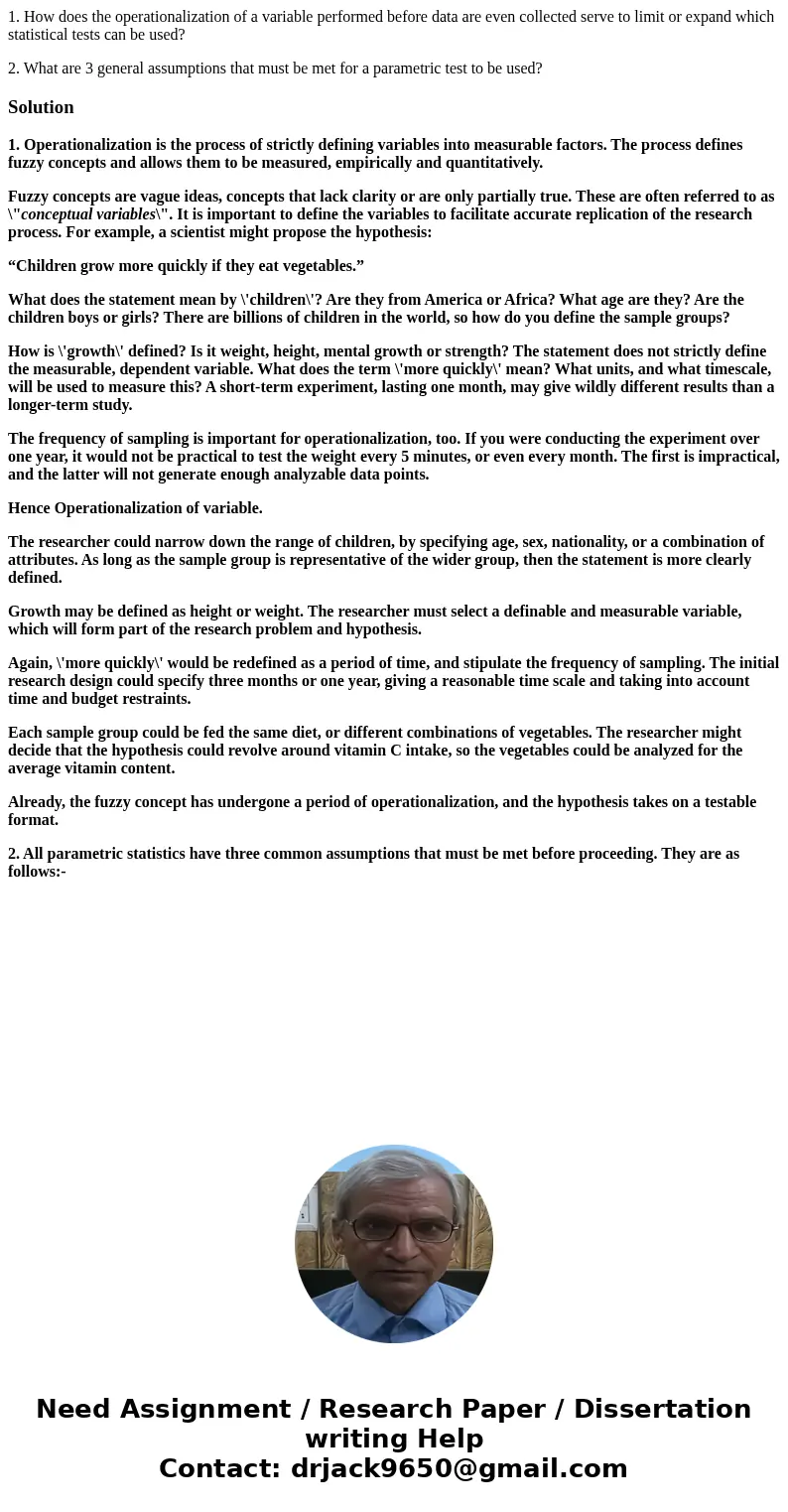1 How does the operationalization of a variable performed be
1. How does the operationalization of a variable performed before data are even collected serve to limit or expand which statistical tests can be used?
2. What are 3 general assumptions that must be met for a parametric test to be used?
Solution
1. Operationalization is the process of strictly defining variables into measurable factors. The process defines fuzzy concepts and allows them to be measured, empirically and quantitatively.
Fuzzy concepts are vague ideas, concepts that lack clarity or are only partially true. These are often referred to as \"conceptual variables\". It is important to define the variables to facilitate accurate replication of the research process. For example, a scientist might propose the hypothesis:
“Children grow more quickly if they eat vegetables.”
What does the statement mean by \'children\'? Are they from America or Africa? What age are they? Are the children boys or girls? There are billions of children in the world, so how do you define the sample groups?
How is \'growth\' defined? Is it weight, height, mental growth or strength? The statement does not strictly define the measurable, dependent variable. What does the term \'more quickly\' mean? What units, and what timescale, will be used to measure this? A short-term experiment, lasting one month, may give wildly different results than a longer-term study.
The frequency of sampling is important for operationalization, too. If you were conducting the experiment over one year, it would not be practical to test the weight every 5 minutes, or even every month. The first is impractical, and the latter will not generate enough analyzable data points.
Hence Operationalization of variable.
The researcher could narrow down the range of children, by specifying age, sex, nationality, or a combination of attributes. As long as the sample group is representative of the wider group, then the statement is more clearly defined.
Growth may be defined as height or weight. The researcher must select a definable and measurable variable, which will form part of the research problem and hypothesis.
Again, \'more quickly\' would be redefined as a period of time, and stipulate the frequency of sampling. The initial research design could specify three months or one year, giving a reasonable time scale and taking into account time and budget restraints.
Each sample group could be fed the same diet, or different combinations of vegetables. The researcher might decide that the hypothesis could revolve around vitamin C intake, so the vegetables could be analyzed for the average vitamin content.
Already, the fuzzy concept has undergone a period of operationalization, and the hypothesis takes on a testable format.
2. All parametric statistics have three common assumptions that must be met before proceeding. They are as follows:-

 Homework Sourse
Homework Sourse